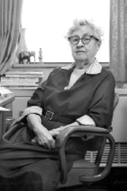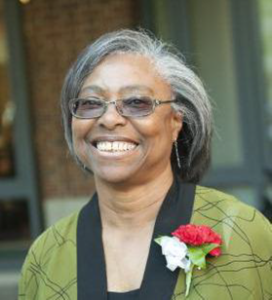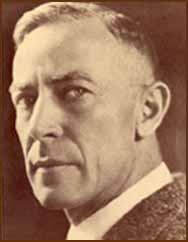ASC Award Namesake Bios
HERBERT BLOCH
Herbert Aaron Bloch was born in New York City in 1904. He took his Bachelor’s Degree from New York City College in 1926. He took his Master of Arts and Ph.D. degrees at Columbia University, the latter in 1934.
He was appointed Director of Social Studies at Upstate St. Lawrence University in 1935. He was attached to the 50th Infantry Division during World War II, serving as chief military government officer. After the war, he supervised the repatriation of 250,000 refugees and was awarded the Bronze Star and the French Croix de Guerre for his work.
He returned to Upstate St. Lawrence University after the war, and in 1950 was appointed as Chair of the Department of Sociology and Anthropology. He accepted a faculty position at Brooklyn College in 1956, and became Director of Graduate Studies in 1963. Dr. Bloch was also Associate Dean of Graduate Studies of the City University of New York, a group composed of the graduate divisions of Brooklyn, City, Hunter and Queens Colleges. He was a founder of the Frederick Moran Institute on Delinquency and Crime.
He was perhaps best known for his work in the area of delinquency, and served as a consultant to the New York State Youth Commission and other government bodies. Dr. Bloch published several books on juvenile delinquency including Disorganization, Personal and Social: A Blueprint for Juvenile Delinquency Prevention (1952), Delinquency, the Juvenile Offender in America Today (1956, with Frank Flynn), and The Gang, a Study in Adolescent Behavior (1958, with Arthur Niederhoffer).
He also wrote a number of other works including, Concept of Changing Loyalties (1934), Individual and Social Pathology (1950), Crime and Insanity (1959), Crime in America (1961), and Culture and Homicide: A Study of the Ceylonese Murder (1961). He had a particular interest in Ceylon which stemmed from his service in the late 1950s as the Chief of the U.S. State Department’s Public Safety Mission to Colombo.
Dr. Bloch passed away in New York City in May of 1965.
GENE E. CARTE
Gene E. Carte served as the Chair of the Department of Criminal Justice at the University of Cincinnati during the mid-1970s. He received his D.Crim from the University of California at Berkeley and did his undergraduate studies at Florida State University. He was killed, on November 30, 1977 at the age of 39, during a robbery as he was retrieving research materials from a former student. He was known for his exuberance, his imagination, and his graciousness, and he was taken from us too soon.
RUTH SHONLE CAVAN
Ruth Shonle Cavan was born in 1896 in Tuscola, Illinois. She took her PhD in sociology from the University of Chicago in 1926. She maintained an affiliation with the University of Chicago for many years, working primarily with Ernest Burgess on a variety of projects. Cavan left the University of Chicago in the 1947 to take a faculty position at Rockford College as the school’s only professor of sociology. She retired from Rockford in 1962, but then took a position on the faculty at Northern Illinois University in 1964, working their until her second retirement in 1977, at age 80. Cavan served as a Professor Emeritus at both Rockford College and Northern Illinois University until her death in 1993 at age 96.
In her early works, she built upon the theoretical perspectives and methodologies of the Chicago School. Her first book, Suicide, was published in 1928, followed up by The Adolescent in the Family in 1934. During the twenty-year period following the receipt of her PhD, she published eight books and some thirty articles. These works focused primarily on the family, criminology, and delinquency.
She published Criminology in 1948. This work was adopted by the United States Armed Forces Institute. She turned her attention in the 1950s to prisons and prison reform, and wrote of the need for less reliance on prisons, and argued for an increased use of probation. Her research interests moved into the cross-national realm at this time, and she authored numerous articles in the area of crime and criminology that carried an international theme.
She maintained an interest in families and youth throughout her career, publishing numerous works on the topic. Two of her more notable works in these areas were Juvenile Delinquency (1962; this book went into four editions), and Delinquency and Crime: Cross-Cultural Perspectives (1968). “Negro Family Disorganization and Juvenile Delinquency,” published in 1959, also achieve some measure of recognition at the time.
She was the President of the Midwest Sociological Society and of the Illinois Council on Family Relations, and served on the board of the National Council on Family Relations. The American Sociological Association granted her fellow status in 1959, and the American Society of Criminology recognized her as a Fellow in 1965. In 1974, the Ruth Shonle Cavan Auditorium was so named at Northern Illinois University.

Photo of Ruth Shonle Cavan taken July 5, 1979
For a bibliography of Ruth Shonle Cavan works, go to:
www.swarthmore.edu/SocSci/rbannis1/SocWomen/Sources/Cavan.htm
For more information concerning the life and times of Ruth Shonle Cavan, see Imogene L. Moyer,
“Life and Works of Ruth Shonle Cavan: Pioneer Woman in Criminology,” Journal of Crime and
Justice, Vol 12 (2), 1989, pp. 171-201.
MICHAEL J. HINDELANG
Michael J. Hindelang was only 36 and at the height of an outstanding career as a criminologist when he died in 1982. He earned his b.a. in psychology in 1966 from Wayne State University and his master’s degree in social psychology from the same institution in 1967. Only two years later, he completed his doctorate in criminology from the School of Criminology at the University of California, Berkeley. His first teaching jobs were at the California State University at Los Angeles and the University of Washington. In 1970, he joined the faculty at the School of Criminal Justice at The University at Albany where he was promoted to full professor in 1976. He remained at the School of Criminal Justice for the rest of his career.
Hindelang was an exceptional researcher and teacher, and took on a number of important professional duties during his life. His research interests including examining the validity of crime data from various sources, studying the correlates of delinquency, and testing theories of crime causation. Over a decade after his death, he was named one of the “four American criminologists [who] were particularly influential” in a study of the most significant criminologists in the English speaking world.1 At that time his most cited publications were his book with Travis Hirschi and Joseph Weis, Measuring Delinquency (Sage, 1981) and his article “The correlates of delinquency: The illusion of discrepancy between self-report and official measures,” American Sociological Review, 44: 995-1014, also with Hirschi and Weis. His development of a life-style/opportunity perspective on victimization, in his 1978 book with Michael Gottfredson and James Garofalo (Victims of Personal Crime: An Empirical Foundation for a Theory of Personal Victimization, Ballinger, 1978), was another significant contribution. As Alfonso Serrano Maillo stated in dedicating his book (Oportunidad y Delito, Madrid: Dykinson, 2009) to Hindelang: “One of the main reasons for the central place occupied by opportunity at the moment is related to Hindelang’s seminal work and contributions. His relevance for contemporary criminology cannot be exaggerated.” Along with publishing dozens of journal articles and a number of book-length works, Hindelang also created and edited eight volumes of the Sourcebook of Criminal Justice Statistics, which continues to be published out of the Michael J. Hindelang Criminal Justice Research Center at the School of Criminal Justice at Albany.
Students lucky enough to have been taught by Hindelang were inspired by his zeal and enthusiasm for criminal justice research. His dedication to teaching is commemorated by the Michael J. Hindelang Memorial Scholarship, an endowed award presented annually by The School of Criminal Justice at Albany.
Hindelang’s apparently boundless energy and commitment to advancing criminology extended to the profession more broadly. He was an associate editor of the Journal of Research in Crime and Delinquency and the American Sociological Review, and served on the editorial boards of Criminology, Law and Human Behavior, and Journal of Criminal Justice.
An obituary published in the Journal of Crime and Delinquency shortly after Hindelang’s death in 1982 at age 36 concluded this way: “His broad influence on criminological thinking, as well as his direct effect on his students and his colleagues, will be long lasting.” In the decades since, this statement has proven to be accurate. In 2010, when asked about why he thought Michael Hindelang has been so important to the field, Travis Hirschi stated “Michael Hindelang believed that criminology could be advanced through reason and effort. That said it all. No one worked harder, and no one was more intent on providing a factual basis for the field, without concern for its political implications.”
______________
1 Cohn, Ellen G. and David P. Farrington. 1994. “Who are the most influential criminologists in the English-speaking world?” British Journal of Criminology, 34 (2): 204.
JOAN PETERSILIA
 Joan Petersilia was a transformational leader and scholar who led the United States in correctional reform. She dedicated her life work to bringing social science research to bear on crime policy, and her work laid the foundation for methodologically rigorous, practice informed, and policy-relevant research and evaluation that set the standard for the field. She is most well-known for her work in the area of corrections, particularly her early work on intensive supervision probation. She was also pioneer in the study of prisoner reentry, and published the seminal book, When Prisoners Come Home: Parole and Prisoner Reentry. This work serves as one of the major resources on reentry and offers a framework for reform that is still relevant today.
Joan Petersilia was a transformational leader and scholar who led the United States in correctional reform. She dedicated her life work to bringing social science research to bear on crime policy, and her work laid the foundation for methodologically rigorous, practice informed, and policy-relevant research and evaluation that set the standard for the field. She is most well-known for her work in the area of corrections, particularly her early work on intensive supervision probation. She was also pioneer in the study of prisoner reentry, and published the seminal book, When Prisoners Come Home: Parole and Prisoner Reentry. This work serves as one of the major resources on reentry and offers a framework for reform that is still relevant today.
Joan was also an embedded researcher and served as special advisor to the governors of California during a critical time of reform and reorganization, and her efforts were instrumental in de-carceration in this state. She was also a generous mentor and teacher and trained her students to use science to inform policy. She took an active role in training applied criminologists at the University of California-Irvine and brought her knowledge of law in practice to students at Stanford. She was one of the very few who was able to blend academic skills with a unique ability to work with policymakers and practitioners in the criminal justice field.
Joan was also a tireless fighter for individuals with disabilities, something both of her sons faced. Those who knew Joan best would agree and attest to the fact that her passion for the work she did was fueled by the sheer love of doing criminological research and an unwavering commitment to escorting research into arenas where it could make a difference in the lives of real people, families and communities, especially those who most suffer from policies and practices. Her compassion for others knew no bounds; it motivated her dogged work ethic and insatiable desire to “get it right.”
Joan began her career as director of the Criminal Justice Program at the RAND Corporation. She then moved to the University of California-Irvine where she served as Professor of Criminology, Law and Society for twenty years. She also co-founded the UCI Center on Evidence-Based Corrections. She ended her academic career as the Albert H. Sweet Professor of Law at Stanford University. Her work has been honored in many ways including the 2014 Stockholm Prize in Criminology, the American Society of Criminology (ASC) Vollmer Award, and the 2002 ASC Division on Corrections and Sentencing Senior Scholar Award. Joan also served as president of the American Society of Criminology in 1990. She will always be one of the foundational scholars of correctional and criminal justice research and policy reform.
RUTH D. PETERSON
 Ruth D. Peterson is emeritus professor of sociology at The Ohio State University, and former Director of the OSU Criminal Justice Research Center (from 1999 to 2011). She served as the President of the American Society of Criminology in 2016, and was the recipient of the ASC Sutherland Award in 2011. Her research focuses on community conditions and crime, racial and ethnic inequality in patterns of crime, and the consequences of criminal justice policies for racially and ethnically distinct communities. With Lauren J. Krivo, she co-authored Divergent Social Worlds: Neighborhood Crime and the Racial-Spatial Divide (Russell Sage Foundation 2010). With Lauren J. Krivo and John Hagan, she was the co-editor of The Many Colors of Crime published by New York University Press (2006). She is also the co-organizer (with Lauren Krivo) of the Racial Democracy, Crime, and Justice-Network and its Crime and Justice Summer Research Institute: Broadening Perspectives and Participation. Peterson is a member of CJRC’s Spatial Crime Research Working Group. She received her Ph.D. from the University of Wisconsin-Madison in 1983.
Ruth D. Peterson is emeritus professor of sociology at The Ohio State University, and former Director of the OSU Criminal Justice Research Center (from 1999 to 2011). She served as the President of the American Society of Criminology in 2016, and was the recipient of the ASC Sutherland Award in 2011. Her research focuses on community conditions and crime, racial and ethnic inequality in patterns of crime, and the consequences of criminal justice policies for racially and ethnically distinct communities. With Lauren J. Krivo, she co-authored Divergent Social Worlds: Neighborhood Crime and the Racial-Spatial Divide (Russell Sage Foundation 2010). With Lauren J. Krivo and John Hagan, she was the co-editor of The Many Colors of Crime published by New York University Press (2006). She is also the co-organizer (with Lauren Krivo) of the Racial Democracy, Crime, and Justice-Network and its Crime and Justice Summer Research Institute: Broadening Perspectives and Participation. Peterson is a member of CJRC’s Spatial Crime Research Working Group. She received her Ph.D. from the University of Wisconsin-Madison in 1983.
AUGUST VOLLMER
For more information about August Vollmer, go to: http://en.wikipedia.org/wiki/August_Vollmer




